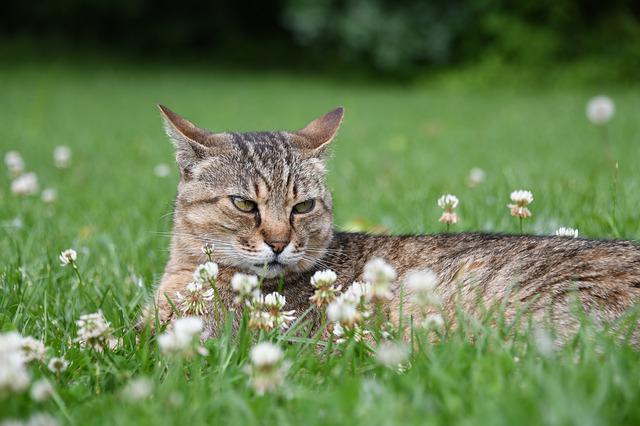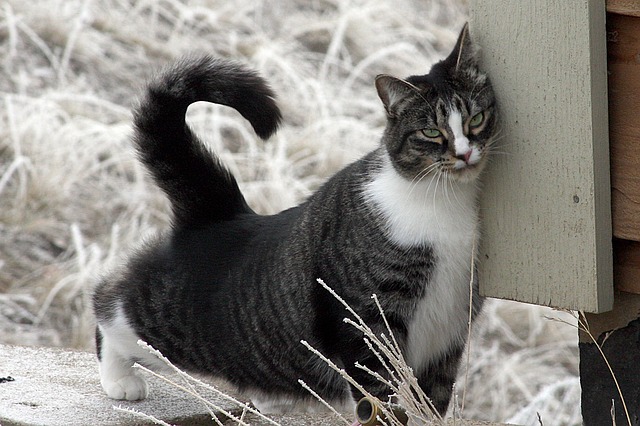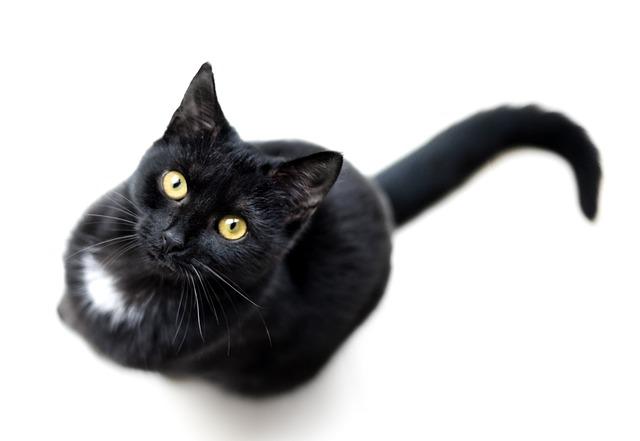Your feline expresses itself through more than just
purring or meowing. They also communicate
with ear and scent signals.
Our feline friends communicate to their world through meows, purrs and meows (vocalizations) and even tail/body language! In our May 9th blog, we explored these familiar forms of kitty language to help cat parents better understand their furry companions.
In today’s blog post, we’re going to explore the last two forms of feline communication, ears and scent signals. Below, learn how to decipher these two common ways your cat expresses itself!
Refer to Lili Chin’s Cat Language Poster to Learn More!

Cat Language: The Ears
Body language is a huge component of how animals (and humans) communicate with each other and their world at large. According to The Spruce Pets, “ears are a kitty barometer that can help owners anticipate and avoid potential problems.”
Previously, we deciphered how the feline tail communicates specific messages and moods, but there’s more.
Felines also communicate by using the 32 muscles in each ear (compared to only six muscles in each of our ears). So, with all this muscle power, what are your cat’s ears conveying?
- The ears of a relaxed kitty will be in their natural and neutral posture. They may twitch in response to a noise.
- A playful cat will have their ears in an upright position. They look alert with their ears pointing forward. This position indicates interest or curiosity from the cat.

- Ears that move quickly back and forth are all signs of a highly aroused cat that may be:
- Scared.
- Worried.
- Agitated.
- Their ears may also be:
- Down and pointed sideways (exhibiting uneasiness or feeling threatened), i.e., “airplane ears/wings” or
- Flat against their head (the cat is fearful or angry).
Health Pets: 30 Ways Your Cat Speaks to You

Feline Language: Scent Signals
If you’ve ever owned a cat, you know scent-marking is a common form of feline expression. The Cat Behavior Associates explains your cat’s scent as their “calling card,” leaving behind volumes of kitty information. (Dogs have the same natural form of communication.)
Unlike canines, cats have a variety of scent glands, including their:
- Cheeks, Lips and Forehead (called head bunting by feline experts).
- Low-intensity, friendly, calming, affectionate and inclusive, reflecting security and familiarity.
- Paw Pads:
- Used for scent marking along with physical claw marks.
- Anal Glands, Flanks, Tail & Urine
- High-intensity scent-marking under stress or arousal.
Scent Signals = Cat Language
The scent glands contain – and release – chemicals called pheromones which contain vital information for another cat or animal. Let’s look at why cats use scent signals.
Feline scent signals are used to:
- Identify other colony members.
- Define/mark their territory.
- Define reproductive status.
- Soothe themselves.
- Bond.
- Act as subtle aggression to warn other cats away from their territory.
We hope you’ve enjoyed learning more about cat language! Feel free to comment below and be sure to subscribe
to our bi-monthly blog posts in the right-hand column!

Feline Head Bunting
Head bunting by your cat is an open invitation for your affection and interaction! EquiGroomer tools are the perfect answer to nurturing the bond with your cat!

